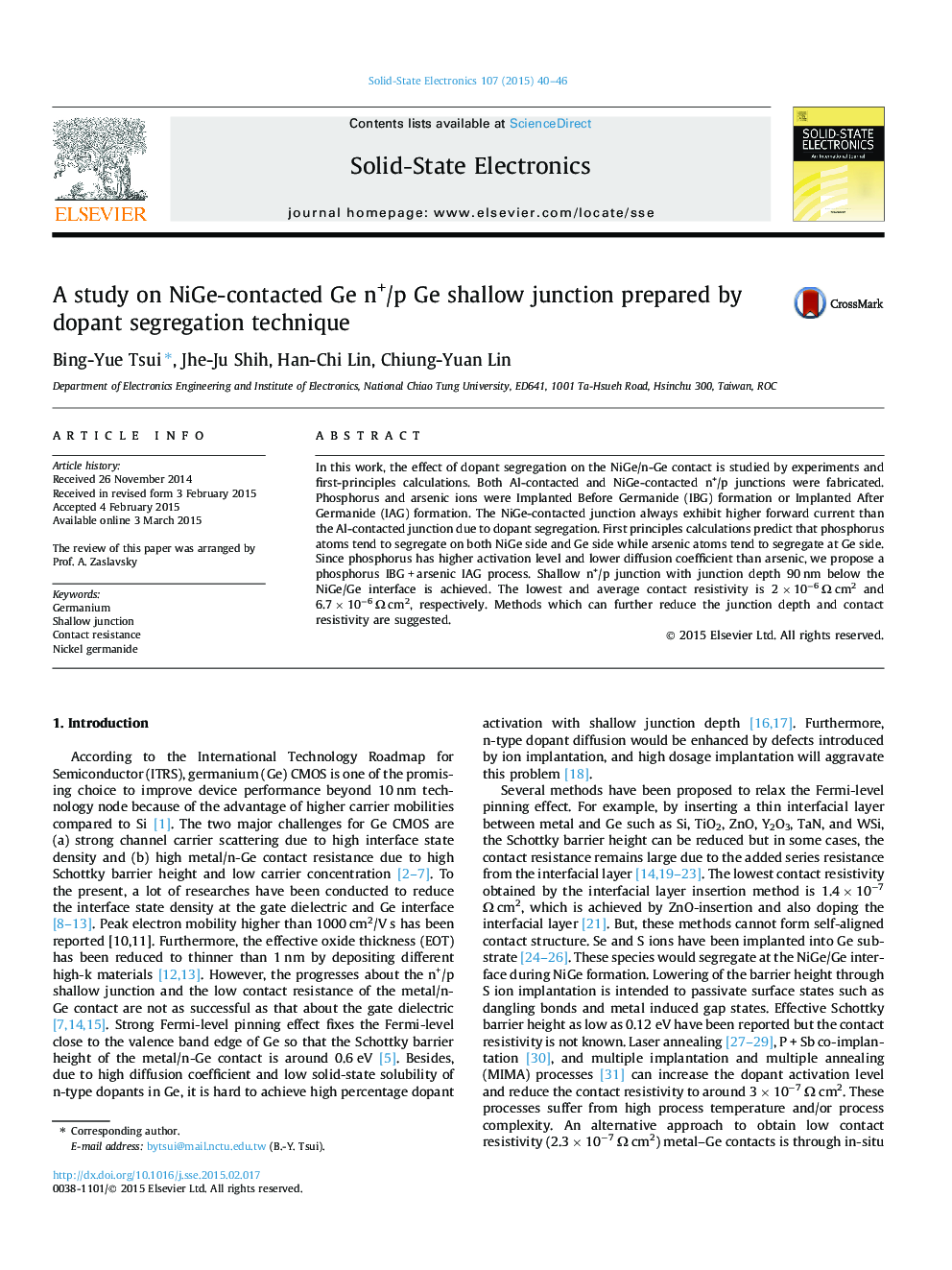| Article ID | Journal | Published Year | Pages | File Type |
|---|---|---|---|---|
| 747918 | Solid-State Electronics | 2015 | 7 Pages |
•We study the Ge n+/p shallow junctions formed by dopant segregation technique.•Phosphorus and arsenic would segregate at the NiGe/Ge interface.•Ion implantation after NiGe formation along cannot form low leakage current junctions.•P IBG + As IGA process is recommended for low leakage and low contact resistance shallow junctions.
In this work, the effect of dopant segregation on the NiGe/n-Ge contact is studied by experiments and first-principles calculations. Both Al-contacted and NiGe-contacted n+/p junctions were fabricated. Phosphorus and arsenic ions were Implanted Before Germanide (IBG) formation or Implanted After Germanide (IAG) formation. The NiGe-contacted junction always exhibit higher forward current than the Al-contacted junction due to dopant segregation. First principles calculations predict that phosphorus atoms tend to segregate on both NiGe side and Ge side while arsenic atoms tend to segregate at Ge side. Since phosphorus has higher activation level and lower diffusion coefficient than arsenic, we propose a phosphorus IBG + arsenic IAG process. Shallow n+/p junction with junction depth 90 nm below the NiGe/Ge interface is achieved. The lowest and average contact resistivity is 2 × 10−6 Ω cm2 and 6.7 × 10−6 Ω cm2, respectively. Methods which can further reduce the junction depth and contact resistivity are suggested.
